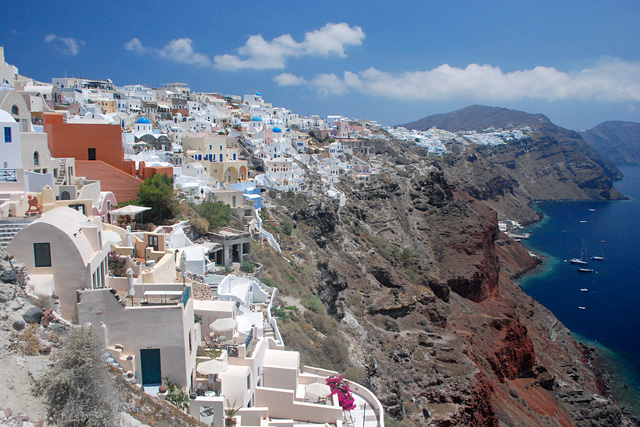Human Culture – The Microcommunities of Your Workplace
I have just finished reading Mark W. Schaefer’s terrific book, Marketing Rebellion: The Most Human Company Wins. In Mark’s book, he describes the disappearance of the traditional sales-funnel (know, like, trust, buy, refer) and the ‘marketing rebellion’ where the customer of a business is now their marketing department – for better or for worse.
As a business owner, I am interested in learning about new business trends. The focus of Mark’s book appealed to me immediately.
In Chapter 9, there is a standout quote by Hugh MacLeod.
“If you talked to people the way advertising talked to people, they’d punch you in the face.” Hugh Mcleod
My attention riveted to the story of the Cycladic Islands.
Cycladic Islands of Greece
Mark went on holiday to the stunning Cycladic Islands of Greece, the cradle of civilization. All 200 islands were formed by volcanic activity millions of years ago and have similar landscapes, vegetation, and climate. Look from any vantage point and see the neighboring islands. Imagine different cultures that close together.
And yet, he says, they are all so different.
Over the years, each of the tiny islands developed its own microclimate of food. Their art, history, customs, and stories are endless sources of local pride. No matter where you turn, everybody on each island knows each other and they are all waving, chatting and laughing. Who knew you could visit the 20 most inhabited islands in the chain and find 20 fascinating and completely different microclimates?
As I continued to read Mark’s description of these islands, my mind wandered, and I began to realize that what he was describing was a metaphor for many workplaces.
No Human Culture is the Same
A typical workplace is made up of many groups of employees who tend to spend time together. They may be a physical team, or simply developed social connections and attachments to each other. The stronger groups might even appear as cliques to the outside.
We have worked where these cliques have developed into very tight communities – or micro-communities. They tend to have their own unique way in which they do work. Others employees can find this very difficult.
Like inhabitants of any small island, communication in these groups travels quickly. Sharing a strong history and bonds of trust, there is a wariness of strangers. Does any of this sound familiar to you? Have you worked in an organization where such an ‘island community existed? Some groups may have appeared and or really worked to be, unique compared to others?
Micro-communities Within Your Organization
In his description of the islands, Mark connects marketers to these microcultures in order to sell their products and services.
For me, the story illustrates the experience of a new employee in an organization. They approach the group of ‘islanders’ as a new member. To the members of the group though, this person is an ‘outsider’ and the ‘islanders’ are wary and skeptical of their presence. The islanders’ control who has access to them and who doesn’t. So what is an outsider to do in order to gain access and acceptance?
Ask the Humans – Talk to the Islanders!
Mark’s solution was simple: “Ask the islanders!”
He surmises, “What if we asked the islanders, “hey how do I get an invite to the island?”
He suggests that the answer might look something like this:
- Be a friend.
- Learn about us.
- Be interested in us.
- Do something useful.
- Respect us.
- Come alongside us in order to be there when we need you.
- Show us that you understand our values.
- Share experiences that show us what your life is like beyond our limited view of this island.
- Don’t tell us you’re great and that you belong here. We must see it as well.
- Never annoy us or show up uninvited – that’s rude.
Groups that have their own unique microclimate. Newbies often struggle trying to break in. Maybe we need to approach it with more grace?
What happens in your workplace?
Do your new members feel welcome? How do you know? How do they feel engaged and valuable to the other islanders and the island’s purpose? (or work and human culture at work?)
We know the benefits of having engaged employees (islanders):
Offer boost of productivity. Those who are engaged and invested in their roles produce 21% more effective results. Disconnected employees work less, cost money and demotivate others.
Engaged employees are less likely to quit. Unwanted turnover is expensive and difficult. If your employees are invested in your workplace and they’re happy in their role, they’re far less likely to leave.
Welcomed and engaged employees are positive. Negative feedback surfaces more than positive, which is why it’s important to engage with employees and give them a reason to feel proud and relevant at work.
The human culture is more creative. Unique ideas don’t equate to creativity. Remarkable ideas connect conditions or things that exist in new ways. Creative problem solving breathes new possibilities into work.
Ultimately, engagement leads to a healthier and more creative workplace (island), where employees (islanders) want to contribute meaningfully.
It is time to think about how your island welcomes outsiders.






